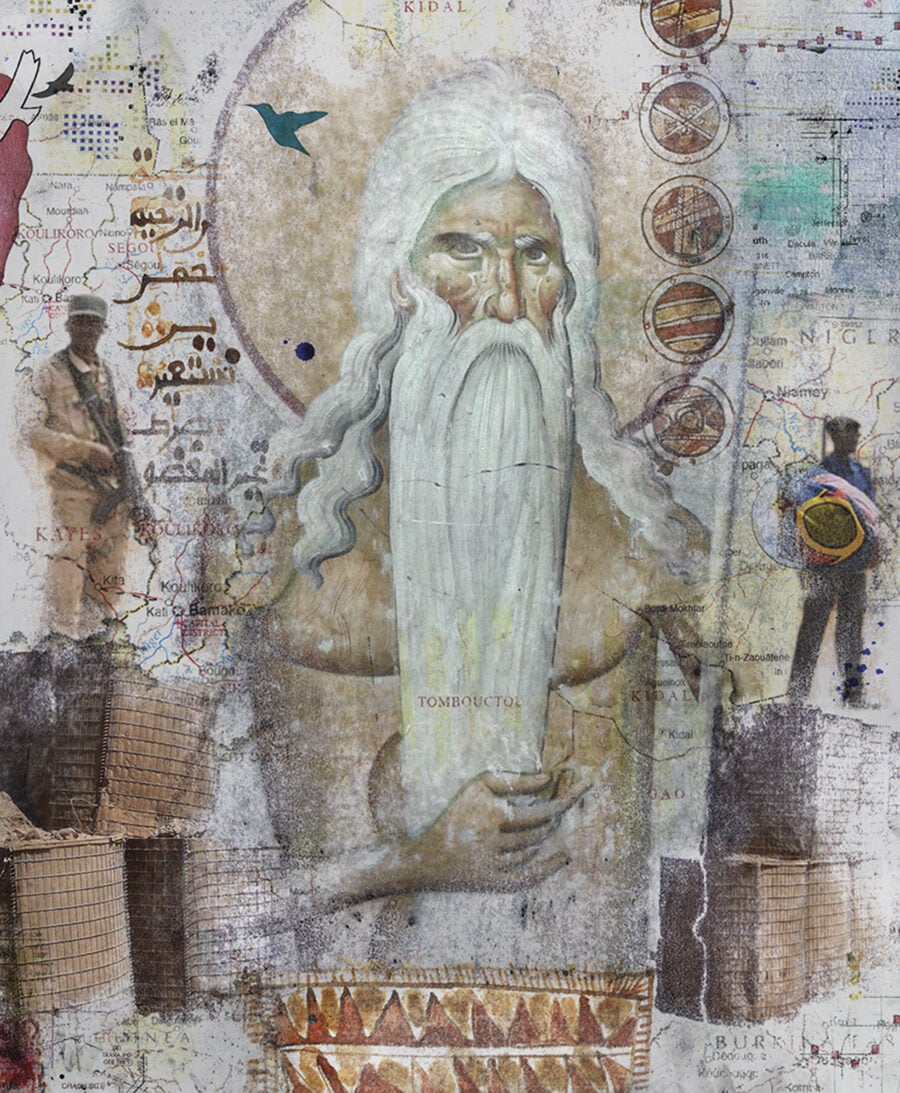
Illustrations by Brian Hubble. Source image: Manuscript courtesy Bibliothèque Mamma Haïdara de Manuscrits et la Documentation
Last August I found myself aboard a United Nations plane high above the Sahel, the vast semiarid region stretching across West Africa, whose swells of sand and rock look from the air like an inland sea. Beside me was Father Columba Stewart, a Benedictine monk. Columba is in his mid-sixties, with a closely trimmed head and wire-rimmed glasses. Back at Saint John’s Abbey, the monastery in Minnesota where he has lived for the past forty years, he wears the traditional black habit of his order, but for this trip he sported a preppier look—a beige Eddie Bauer travel shirt,…






















































































